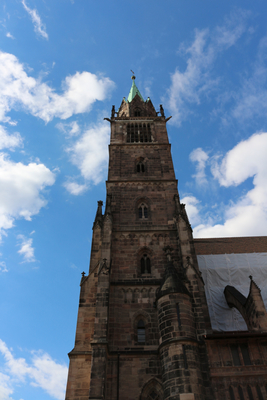

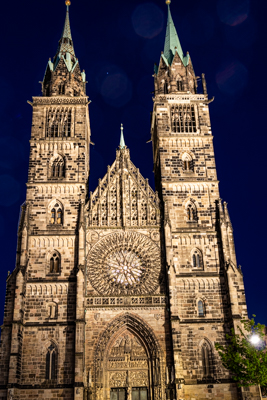


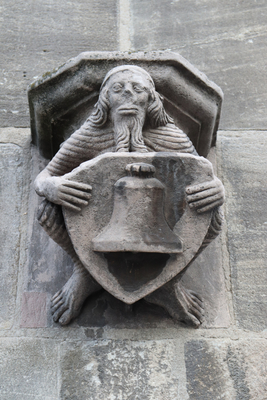
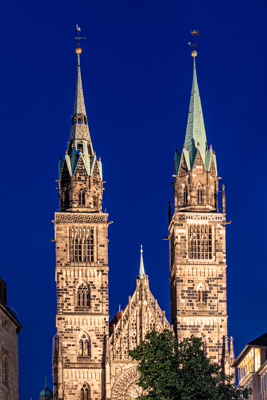
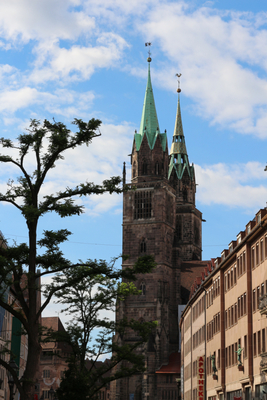











The church was built between 1250 and 1390 in Gothic style and in 1477 the eastern part of the church was enlarged.


















The Church of St. Lawrence is another of the three most sought-after churches in Nuremberg. It is located on Lorenzer Square. It was built between 1250 and 1390 and around 1477 its eastern choir was enlarged according to the model of the Sebalduskirche (St. Sebald's Church). It was a Gothic hall in which the altar of St. Deocar stood. It is dominated by two towers with a richly decorated front with a nine-meter rosette (round window). On the rosette there are coats of arms of Charles IV and his wife Anna Svídnická.
The interior of the church has a rich decoration and many interesting works. E.g. 18 meters high sandstone tabernacle made by Adam Kraft between 1493 and 1496. One of the rarest wooden buildings is the Annunciation to the Virgin Mary, the so-called angelic greeting (Engelsgruss) in a pink wreath of golden roses. It is hung in the space of the main nave and is carved from linden wood by Velt Stoss.
The church also includes three organs with 12,000 flutes and 16 bells, as well as many other paintings, statues and murals. The church has been administered by the Evangelical Lutheran Church since 1525. The church was damaged during World War II and repaired again in 1949.

The Evangelical Lutheran Church of St. Egidien is the only baroque church in Nuremberg.

St. Elisabeth Church is a Roman Catholic church and it is located on Jakobsplatz opposite the St. Jakobskirche.

The church of Our Lady was built in the late gothic style between the years 1468 and 1494

The Friedenskirche is located in the St. Johannis district and it was built between 1925 and 1928. In 1944 the church burned...

St. Jakob is an Evangelical Lutheran church founded in 1209 by Otto IV, Holy Roman Emperor.

The medieval church with St. John's Cemetery.

One of the most interesting church buildings in Nuremberg was inaugurated on May 23, 1968.

The St. Sebaldus Church is one of the biggest churches of Nuremberg